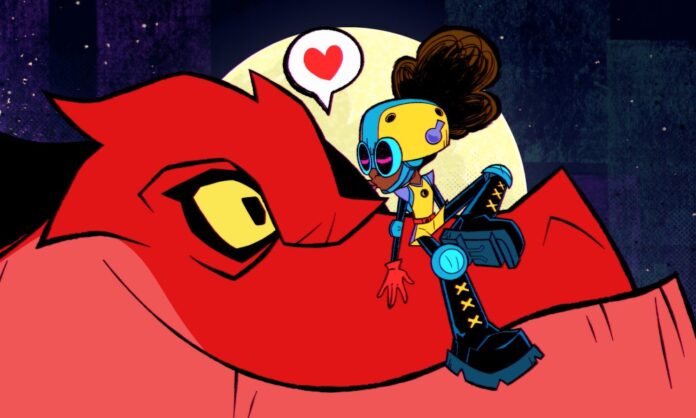|
Getting your Trinity Audio player ready...
|
[adrotate banner=”973″]
When it comes to Marvel, you never know what’s next. How else to describe Moon Girl and Devil Dinosaur, the new animated series based on the hit comic-book series featuring the adventures of 13-year-old New Yorker Lunella Lafayette and her giant red T-Rex?
Taking its cue from some of the more ambitious animated superhero fare out there, Moon Girl and Devil Dinosaur delivers a fast-paced, hip, urban, beat-drenched and utterly modern take on the superhero cartoon series. It also pushes the envelope of expectations for what can be done with an animated series.
Moon Girl and Devil Dinosaur boasts an all-star cast, headed by Diamond White as Lunella and featuring Fred Tatasciore as Devil Dinosaur; Alfre Woodard as Lunella’s grandmother, Mimi; Libe Barer as Lunella’s best friend and manager, Casey; Sasheer Zamata as Lunella’s mom, Adria; Jermaine Fowler as Lunella’s dad, James Jr.; Gary Anthony Williams as Lunella’s grandfather, Pops; and series executive producer, Laurence Fishburne, in the recurring role of The Beyonder, a curious and mischievous trickster familiar to readers of 1980s Marvel comics.
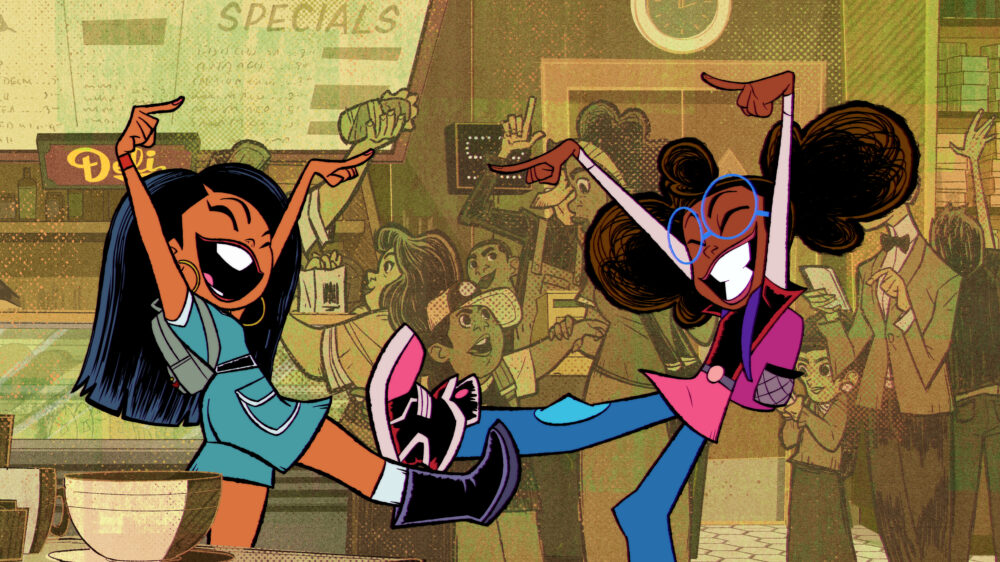
Not Your Typical New Yorker
The show began with Oscar-nominated Fishburne — yes, Morpheus from The Matrix — who long ago swallowed the red pill that leads to becoming a die-hard comic-book fan. The comic version of Moon Girl and Devil Dinosaur, created by writers Brandon Montclare and Amy Reeder with artist Natasha Bustos, debuted in 2015 and paired the brand-new Lunella Lafayette with Jack Kirby’s classic 1970s creation, Devil Dinosaur.
The mix of a brilliant African-American girl running around 21st century New York with a giant red T-Rex prompted Fishburne — whose extensive credits include producing features such as Akeelah and the Bee and executive producing the live-action comedy series Black-ish, Mixed-ish and Grown-ish — to take it to his partner at Cinema Gypsy Productions, Helen Sugland. Calls were made to Marvel and Disney, and a unique deal was made for them to partner on the new animated series.
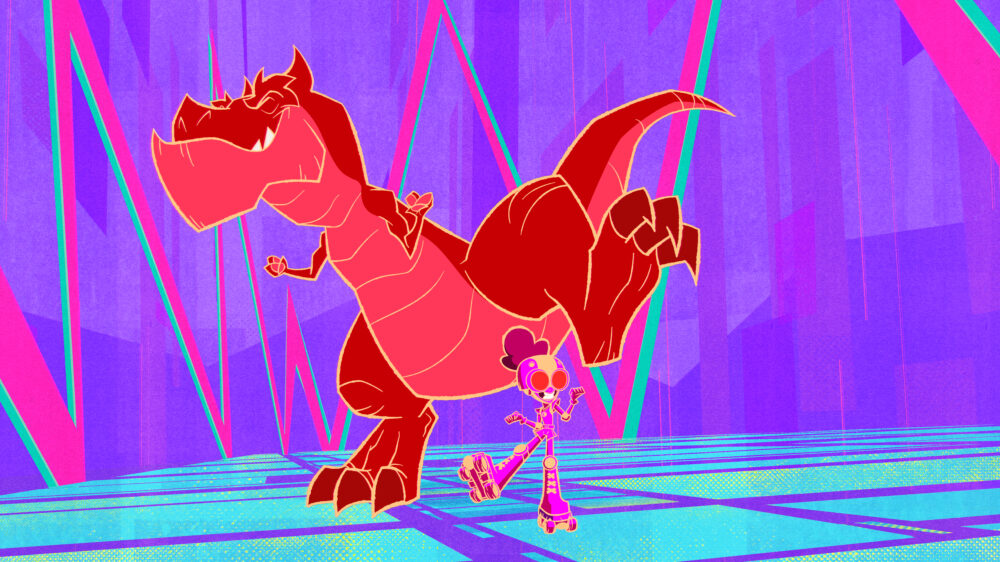
That’s where Steve Loter, an animation veteran of such series as Kim Possible and the DisneyToons feature Tinker Bell and the Legend of the NeverBeast, comes in as executive producer in charge overseeing the vision of the show and the day-to-day production. Loter says he met with Fishburne and agreed on an ambitious and exciting approach to the series.

“It’s a big show, and it’s a show that we really wanted to make sure had deep storytelling,” he says. “We treat the show as a 22-minute feature.” Each episode goes through multiple script iterations, gets its own color scripts, and characters go through multiple palette changes — all of which is atypical for TV animation production,” Loter says.
“The first proof of concept piece that we created was a little animatic piece, and we combined it with the music of Childish Gambino and the song ‘Sweatpants,'” he says. “And I think that was a really great letter of intention … It had a very kinetic energy, but then it also had this authentic music, which also showed this was a kids show, sure, but we wanted to make it for the entire family, and also wanted to kind of push the boundaries of what was expected in kids’ animation.”
That specialness began to attract talent to the show, such as Rodney Clouden, a veteran of adult animated series such as Futurama and American Dad! Clouden signed on to Moon Girl as supervising director for the first season. When Loter — who says he felt Clouden’s experience would help elevate the show beyond a typical kids’ toon — showed the animatic, Clouden was impressed.

“This is something that is different; this has energy, it’s got a vibe. It felt really authentic,” he says. “There’s a sophistication, there’s thought and care in terms of how we’re structuring the stories and the characters and the development. And the music, too.”
One of the keys to unlocking this approach was the success of Sony’s Oscar-winning feature Spider-Man: Into the Spider-Verse, Loter says. Not wanting to copy the look of that feature, Loter says he and Clouden tapped into their inner New Yorker — both are natives — to create an authentic representation of life in the city.
“Not only does that mean that it’s street accurate, like the streets and the buildings are actually accurate to the place that we’re portraying, we wanted to kind of maintain the vibe and sensibility of it,” Loter says. “We looked at the essential New York artists — we looked at Andy Warhol and his screen-printing process; [Jean-Michel] Basquiat; [Keith] Haring; the famous street murals in New York City; the graffiti in the ’70s and in the ’80s; and we tried to find a way to combine all that into a look — and then merge that also with kind of a comic book sensibility.”
They also added modern technology — it’s nearly impossible to tell stories about today’s youths without incorporating the ever-present icons of the mobile phone and social media. “It’s a very good way, especially for a show that’s very graphic, to get a message or an idea of what’s going on in the character’s head,” says Clouden. “It’s like — Boop! — there’s an emoji that pops up, and it just tells everything that needs to be said without even using words.”
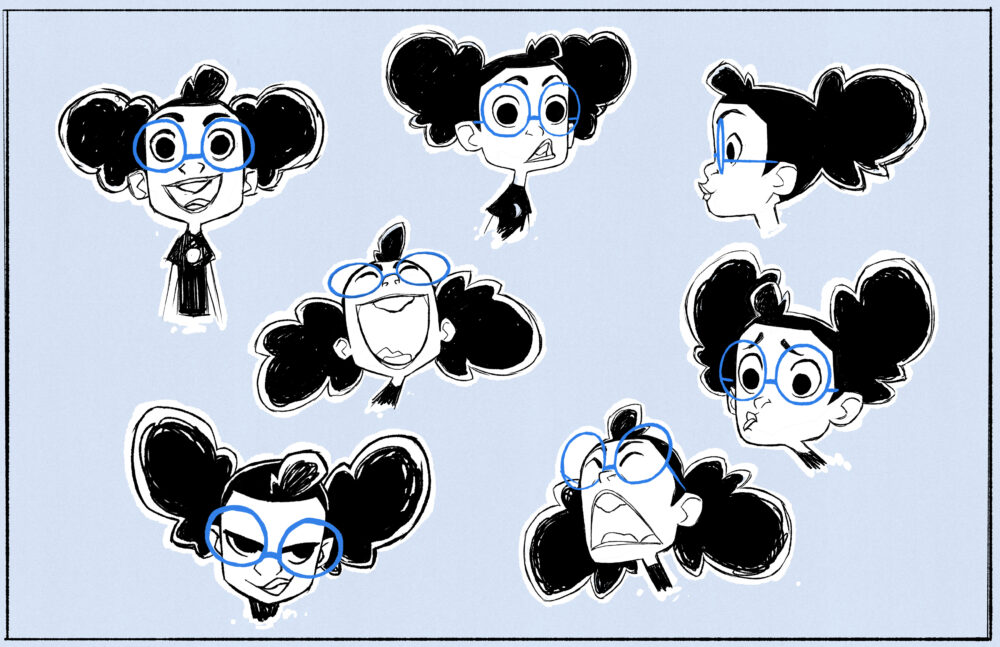
The look of the characters evokes all those influences, filtered through a pen-and-ink esthetic that provides strong contrast with the backgrounds while evoking the series’ comic-book roots. “They feel very, very hand drawn,” Loter says. “There’s a lot of spotted blacks in the characters, so that if you just look at a character before color is applied, it already feels like a very complete piece.”
Achieving the final result of this requires a high degree of collaborations in the creative phase. “This show thrives on input from the entire team,” he says. “Having come from features and from the story trust sensibility, where everyone has a voice to make the movie or the TV show the best it can possibly be, this was really important to me. And I wanted to maintain that even moving into TV.”
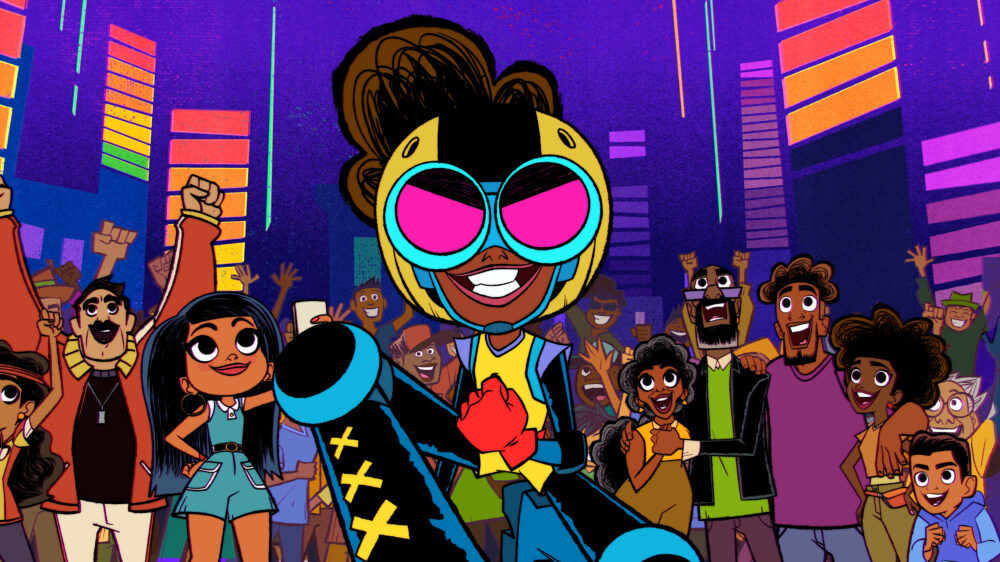
Honoring the Artists’ Visions
Clouden says that openness creates, for everyone working on the show, a sense of ownership. “You see your input there in the script,” he says. “It’s something that makes the artists feel like they’re more involved in the whole process of it.”
For example, Loter cites supervising producer Ben Juwono for his ability to take the stories to a new level in the storyboard phase. “Sometimes, he’s actually involved in the writers room so that he can understand the vision of it moving forward,” Loter says. “And then he just takes it to a whole other level. It’s almost like a second vision on the project.”
The animation studio, Australia-based Flying Bark Productions, has early access to the show’s materials and provides dailies on their work for review. “In a lot of cases, it’s just line work in black and white,” Loter says. “But it gives you an idea of what the scene is … It does kind of tee you up for success, because you’ve already seen all of these in their early forms.”
Moon Girl and Devil Dinosaur premieres Friday, February 10 on Disney Channel, joining the lineup on Disney+ on Feb. 15.




